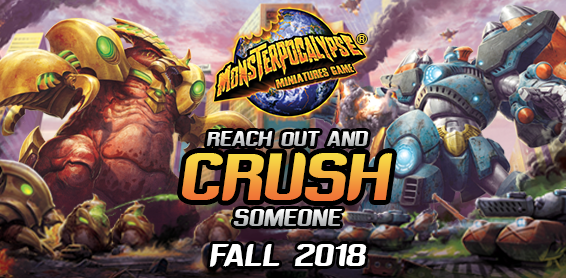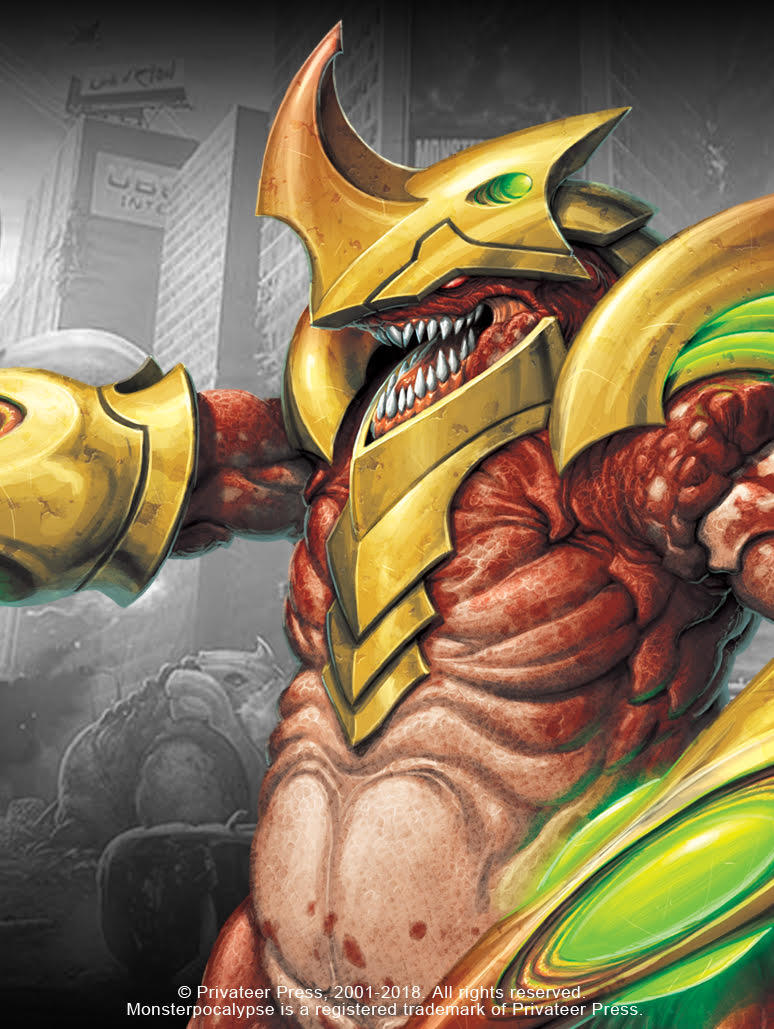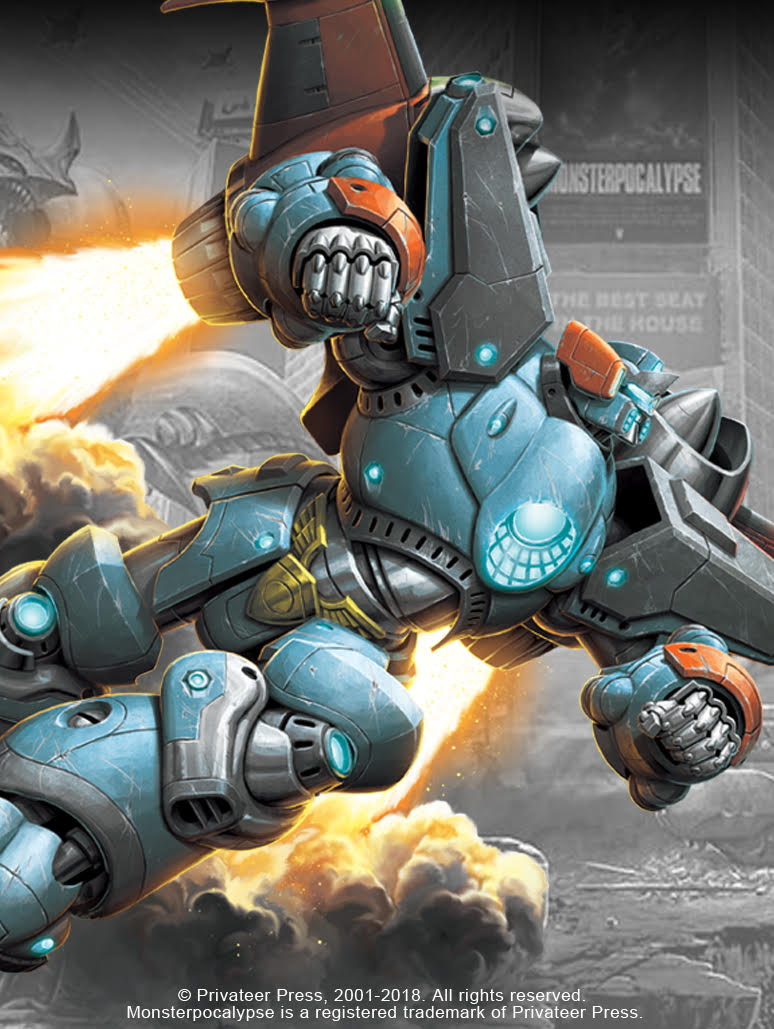
Monsterpocalypse Monday #1

Living With the Monsterpocalypse
Chapter 1 – In the Path of Destruction
John Pressman, Big World News Network
Living With the Monsterpocalypse is an ongoing segment that shines a light on events leading up to and following the arrival of the Planet Eaters and subsequent invaders of Earth. Each installment sheds new light on the early days of this unfolding war against the monsters, with exclusive information obtained from the men and women who were there in the first days of the Monsterpocalypse.
I don’t need to explain what the Monsterpocalypse is to you. Every man, woman, and child on our planet has been living it for months now, ever since that comet first impacted Earth at 15 minutes past 4:00 on September 9 of this year. The world held its breath when the comet streaked into our atmosphere—no doubt conjuring images of the impact that wiped out our world’s previous inhabitants, the dinosaurs.
We escaped extinction, or so we thought. From the cracked face of the comet, a new threat to our very existence emerged in the form of a biological menace beyond the scope of anything we had ever seen before.
In that time, we’ve seen cities ravaged and whole populations displaced by the extraterrestrial beasts we have come to call the “Planet Eaters.” A coalition of biological scientists from around the world came together to study this new menace. While we don’t yet understand our foe, some theories have gained favor in the scientific community.
Samples taken from the debris of the comet that impacted Earth point to it being a fragment of an exoplanet. Material composition is similar to our own earth, but utterly devoid of bacterial and other life forms. A strange crystalline structure, similar to that found at sites of major Planet Eater infestation, permeates these samples. While non-responsive to any of our own tests, this structure has been shown to be incredibly volatile when exposed to the biological energy emissions of the larger Planet Eaters.

Professor Alden Green of the Massachusetts Institute of Technology has put forward a theory about these structures and their connection to the Planet Eaters. “These creatures are an invasive life form driven by a biological imperative to consume [a planet’s] organic matter and resources,” he said in an interview, “but upon completion of that task, they must travel to a new world or die of malnourishment.” Professor Green went on to explain how the Planet Eaters’ crystal hives could serve as the method of conveyance for new invasion; when there is no more material on a world for them to devour, the Planet Eaters direct their biological energy attacks at the crystals, setting off a chain reaction that destroys the planet and sends infested fragments scattering throughout the galaxy. “Like dandelion seeds on the breeze, they travel until they touch down on a new planet or hurtle through the void forever.”
Supporting this theory, autopsies performed on the smaller Planet Eater creatures have uncovered startling new information. Sequencing the DNA of three different strains of these smaller forms has revealed that they share almost no chromosome pairs, suggesting evolution from wildly divergent biological strains. The neurological systems do have one commonality, however: the presence of crystalline growths infecting the primary structures.
What does this mean? It seems to suggest that these smaller life forms were once natives of worlds the Planet Eaters consumed. Proving susceptible to infection of the brain and nervous system, they followed the larger Planet Eaters and joined them after the destruction of their worlds.
This kind of “mind control” may seem far-fetched, but there is a similar process that occurs on our own world. The fungus cordyceps has proven able to dictate the behaviors of infected insects. An ant with cordyceps growth loses control of its own actions, climbing high into the undergrowth of the Amazon jungle before it dies. This elevation allows cordyceps spores to affect a much wider region, increasing the odds of secondary infection to other ants in the colony.

Most life would not have been able to survive the Planet Eaters’ theorized method of travel, but that too can be explained by the crystalline infection. Morphological similarities between the smaller beasts and the larger seem to be a byproduct of this infection. Samples taken from the metallic-organic chitin of smaller beasts do not share DNA with the rest of the organism, but they do match samples taken from the beast we now call Gorghodra. It seems that the infection alters the physiology of these slave-creatures, making them hardened against the vacuum and radiation of space and increasing their overall durability against conventional weapons.
If Professor Green’s theory is correct, the stakes are higher than we ever could have imagined. We believed that what the Planet Eaters threatened was our civilization, but the truth is much worse than we could have imagined. If they are not stopped, the Planet Eaters will strip the world of any life that does not become enslaved by their infectious crystal parasite. The Earth will not even stand as a gravestone to our once-proud nations, as it will be ripped asunder to carry the Planet Eaters’ plague of locusts across the galaxy.
This story may sound hopeless. I promise you, it is not. Humanity might not have been prepared for the Planet Eaters’ arrival, but our legacy is one of innovation and of responding to the direst circumstances with our tools and ability to adapt. When ice covered the world and the vast majority of life forms began to die off, humanity did more than survive, we thrived.
Do not lose hope, you dispossessed refugees. Do not lose hope, those whose homes stand in the path of the Planet Eaters, because while humanity might not always have had guardian angels, we’ve done the next best thing…

…we built them.
